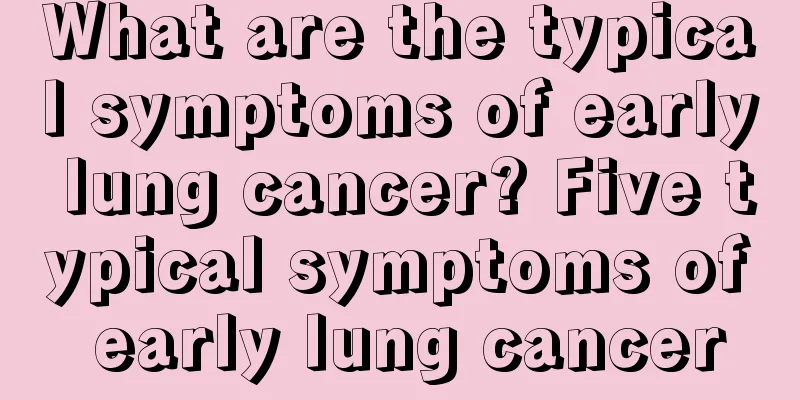What is the best medicine for bone cancer

|
What medicine is best for bone cancer? Chronic diseases such as bone tumors will indeed affect the patient's health after they occur. We should not ignore the treatment of bone tumors. We must treat them as soon as possible when we are sick. The following editor will tell you which medicines are better for bone tumors? 1.Antimetabolites: This type of drug is similar in chemical structure to essential substances for nucleic acid metabolism, such as folic acid, purine, and pyrimidine. It interferes with the metabolism of nucleotides through competition and prevents the proliferation of tumor cells. It is a cell cycle-specific drug and is mainly sensitive to the S phase. Methotrexate and fluorouracil are mainly used for bone tumors in clinical practice. 1) Methotrexate (MTX): Currently, this drug is mostly used in the clinical rescue mode of high-dose methotrexate and leucovorin calcium (HD-MTX-CF). It was first reported and applied by Norman Jaffe in 1972 and is considered to be a turning point in the treatment of osteosarcoma. This chemotherapy method has now become a basic step in the treatment of osteosarcoma. The single-drug efficacy of HD-MTX-CF is 20%-30%. The so-called high-dose MTX refers to the intravenous infusion of MTX that is more than 100 times larger than the conventional dose each time, generally for 4-6 hours, so as to overcome the drug resistance of the tumor and increase the necrosis rate of tumor tissue. After the infusion, rescue measures must be taken to avoid life-threatening situations. Calcium leucovorin is an analog of tetrahydrofolate. After entering the body, it is converted into methylenetetrahydrofolate and N10-methenyltetrahydrofolate, which can participate in the synthesis of deoxycytidine, can surpass the blocking site of MTX, and play a rescue role. In the treatment of osteosarcoma, the dosage is 200 mg/kg or 812 g/m2 (12 g/m2 for children under 10 years old, 8 g/m2 for children over 10 years old). 2) Fluorouracil (5-Fu): This drug is used in combination chemotherapy for bone metastasis, especially for tumors originating from the digestive tract and breast cancer. The general usage is 300 mg/m2 each time, for 5 consecutive days, and repeated for 4 weeks. 2. Alkylating agents: It is the earliest drug used in tumor chemotherapy. This type of drug has active alkylating groups, which replace hydrogen atoms in the corresponding groups of DNA through alkylation reactions, thereby producing cytotoxic effects. It is generally classified as a non-specific drug for the cell cycle. The main drugs used clinically for bone tumors are cyclophosphamide, ifosfamide and alanine nitrogen mustard. 1) Cyclophosphamide (CTX): It has no direct anti-tumor effect and must be activated by liver cytochrome P450 oxidase to form aldehyde phosphoramide, which then decomposes into phosphoramide nitrogen mustard in tumor cells to take effect. It is suitable for osteosarcoma, Ewing sarcoma, rhabdomyosarcoma, malignant lymphoma, multiple myeloma, breast cancer, etc. The usage is a single drug at 1g/m2 intravenous injection, repeated regularly, combined with chemotherapy and reduced dosage as appropriate. 2) Ifosfamide (IFO): It is an isomer of cyclophosphamide, and its mechanism of action is the same as that of CTX, but its anti-tumor activity is stronger than that of CTX. It is suitable for soft tissue sarcoma, osteosarcoma and bone metastasis. It is used by intravenous drip at 2g/m2 for 3-5 consecutive days. 3) Alanine mustard (MEL): also known as L-sarcolytic, its mechanism of action is the same as that of nitrogen mustard, and it is suitable for Ewing sarcoma, multiple myeloma, breast cancer, etc. Usage: Oral administration of 0.25 (mg/kg/d), for 4 days, repeated for 3 weeks. Intravenous drip, 20-40 mg each time, repeated regularly. 3. Antibiotics: This type of drug is generally produced by actinomycetes or molds. They have a quinone-like aromatic structure in their chemical structure. They interfere with the synthesis of mRNA by changing the DNA template by embedding in DNA. They are non-specific drugs for the cell cycle. 1) Doxorubicin (ADM): It is an aminoglycoside antibiotic extracted from the fermentation broth of Streptomyces strains. It has a broad anti-tumor spectrum and is most sensitive to S-phase cells. It is suitable for soft tissue sarcoma, osteosarcoma, Ewing sarcoma, rhabdomyosarcoma, etc. The dosage is 60 mg/m2 for 2 days. The toxic effects on the blood system and heart should be paid attention to. 2) THO-ADM: The mechanism of action and indications of this drug are similar to those of doxorubicin, and it is also effective against tumor cells resistant to doxorubicin. Usage: 60 mg/m2 is administered in two divided doses. The main toxic side effects are in the blood system, and the cardiac toxicity is less than that of doxorubicin. 3) Epirubicin (EADM): The only difference from doxorubicin is that the 4-hydroxyl group of the amino sugar part changes from cis to trans. The efficacy is not much different from doxorubicin, and its toxicity to the heart and bone marrow is significantly reduced. The mechanism of action and indications are similar to doxorubicin. The dosage is 60-90 mg/m2 for a single dose or 40-50 mg/m2 for two days by drip. 4) Mitoxantrone (MIT): Its chemical structure is similar to that of doxorubicin, it has strong anti-tumor activity, has synergistic effects with many anticancer drugs, and does not produce cross-resistance. It is suitable for malignant lymphoma, breast cancer, various acute leukemias, etc. Usage: 8-14mg/m2, repeated every 3 weeks, with a limited dose of 160mg/m2. This drug also has toxic effects on the blood system and heart. After carefully reading the introduction of the article, you have learned about the drug treatment methods of bone tumor diseases. It is necessary to understand the drug treatment methods of bone tumor diseases in life, because only when we understand these drug treatment methods can we correctly treat and recover as soon as possible and not miss the best time for treatment. |
<<: Drugs that are effective in treating bone cancer
>>: What is the chance of curing bone cancer
Recommend
What should I do if I have acne with pus heads?
The phenomenon of acne is very common in life. Al...
Do you know how harmful testicular cancer is?
Do you know how harmful testicular cancer is? Pro...
What tests are needed for glioma
Glioma is a common disease in modern life, but ma...
What are the advantages and disadvantages of taking a cold shower
Living habits are particularly important for a pe...
Can early kidney cancer be cured at the age of 50?
Kidney cancer is a very common cancer. Its incide...
What is biliary reconstruction surgery
This is a problem that many people often encounte...
Functions and characteristics of the left and right brain
Our brain actually consists of many parts, includ...
One place on the tooth keeps bleeding
Whenever we brush our teeth in the morning and ev...
What is the cause of compression lumbar fracture
Compression lumbar fracture can be said to be the...
Diagnostic criteria for type II respiratory failure
For many patients with pneumothorax and asthma, t...
Principles of dietary care for patients with esophageal cancer after surgery
After esophageal cancer surgery, there will be va...
How to wash a silk dress
Silk dresses are of course made of silk. Silk dre...
Pathological types of uterine cancer
Uterine cancer also includes cervical cancer and ...
Does tap water have parasites?
The tap water we usually drink needs to be bottle...
What are the early symptoms of lung cancer? 4 symptoms tell you that lung cancer is coming
Lung cancer is a disease that we all know well. I...









